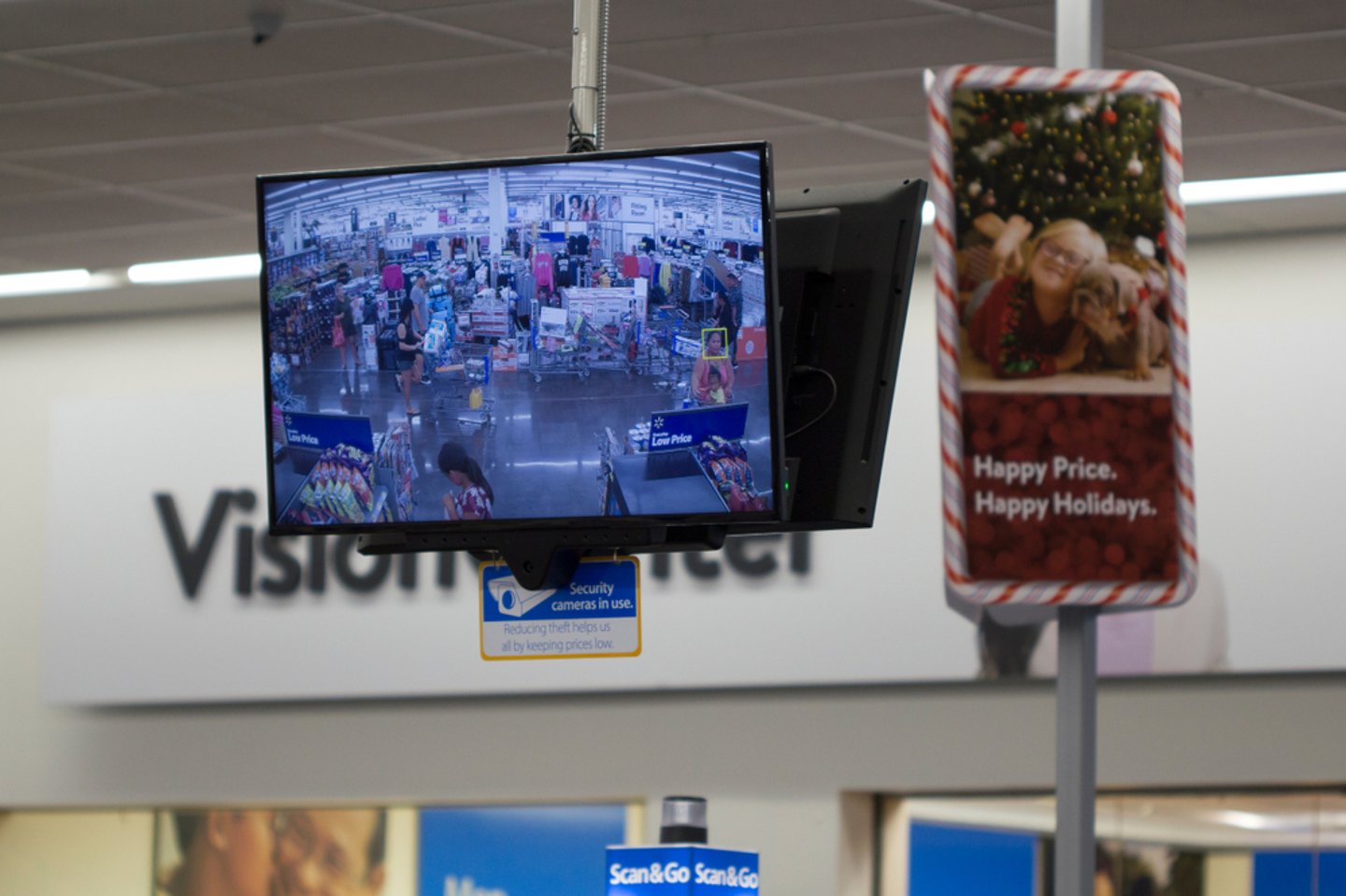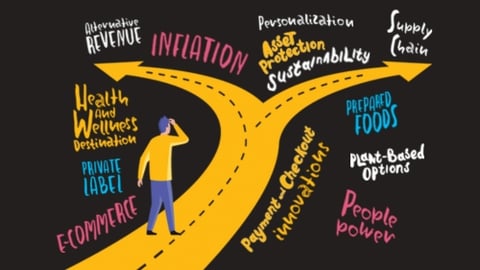SPECIAL REPORT: The Story Behind Shrink
More Shrink Coverage
Ask any food retail executive about their most pressing operational concerns, and shrink will undoubtedly be near the top of their list. While shrink is nothing new within the industry, it has become a more pressing issue in recent years, encompassing everything from organized retail crime and theft to food waste and cybersecurity.
According to the National Retail Federation’s (NRF) 2022 National Retail Security Survey, overall retail shrink, when taken as a percentage of total retail sales in 2021, accounted for $94.5 billion in losses, up from $90.8 billion in 2020. The association found that employee and external theft, including organized retail crime, accounted for about two-thirds of those losses.
It’s estimated that shrink at food retail specifically accounts for as much as 3% of total sales annually, although that number is known to vary widely and has likely increased for many grocers as a result of inflation and shifting consumer trends. McKinsey found that shrink has risen to between 5% and 15% of revenues for ready-to-eat and ready-to-heat products, with other supermarket categories seeing similar numbers.
So, what exactly does retail shrink look like today, and what are leading organizations doing to not only bolster their bottom lines, but also ensure the safety of their associates and customers?
Grappling With the Fallout of Theft
Theft accounts for a vast majority of retail shrink, ranging from self-checkout scams to blatant shoplifting and everything in between. During Target’s first-quarter earnings report, CEO Brian Cornell didn’t shy away from discussing the retailer’s current predicament and outlook on the issue. Cornell expects overall shrink — driven mainly by theft and organized retail crime — to reduce the company’s profitability by more than $500 million this year when compared with last year.
“While there are many potential sources of inventory shrink, theft and organized retail crime are increasingly important drivers of the issue,” Cornell said. “We are making significant investments in strategies to prevent this from happening in our stores and protect our guests and our team. We’re also focused on managing the financial impact on our business so we can continue to keep our stores open, knowing they create local jobs and offer convenient access to essentials.”
According to Cornell, Minneapolis-based Target is investing in team and guest protection, as well as installing fixtures to protect merchandise and adjusting product assortment in affected locations in an effort to ease the effects of shrink within its stores.
Landover, Md.-based Giant Food is also working to mitigate shrink issues caused by retail theft before it’s forced to close its most affected supermarkets. It was reported that the grocer plans to limit the number of entrances to stores to create more obstacles for shoplifters, and also hire security guards — some of them armed — depending on the history of violence in a given store. The retailer additionally intends to keep fewer high-cost items on its shelves, limit the number of items allowed to be taken to self-checkout stands, and put secured items, such as razor blades, in wall dispensers that make noise when items are removed.
“To say [theft has] risen tenfold in the last five years would not be an understatement,” said Giant Food President Ira Kress, noting that violence has also “increased exponentially.”
Walmart CEO Doug McMillon echoed that sentiment late last year, telling CNBC that rates of theft are higher now than ever before. He explained that Bentonville, Ark.-based Walmart has put safety and security measures in place based on store location, and is actively working with local law enforcement to mitigate potential issues. McMillon also asserted that a lax approach from prosecutors regarding retail theft could eventually lead to higher prices and even store closures.
Austin, Texas-based Whole Foods Market, another victim of rampant retail theft, was forced to temporarily close its Trinity Place location in downtown San Francisco earlier this year. According to local media reports, safety concerns led the grocer to shorten the store’s hours last fall, and prior to its closure, shoppers reported that the store had also tightened up liquor purchases due to regular theft issues.
The Growing Threat of Organized Retail Crime
NRF defines organized retail crime as “the large-scale theft of retail merchandise, with the intent to resell the items for financial gain.” According to the Washington, D.C.-based association, this type of theft typically involves a criminal enterprise employing individuals who steal large quantities of merchandise from a number of stores, and a fencing operation that converts the stolen goods into cash. Criminal groups have become more brazen and are using new channels to resell stolen goods, which are often everyday consumer products that are easier to resell, as opposed to more expensive luxury items.
Many large retailers cite organized retail crime as one of the biggest drivers of shrink in recent years. What’s more, a recent NRF survey found that 53% of consumers believe that retail crimes have increased in their communities since the pandemic began, with 79% believing that retail theft affects the price of the goods they buy.
Target’s Cornell shared that he believes organized retail crime is an urgent issue, not just for his company, but across the entire retail industry. “And unfortunately, what I’m most concerned with is it puts our team and our guests in harm’s way,” he noted.
Continued Cornell: “[W]e’re actively collaborating with legislators, law enforcement and retail industry partners to advocate for public-policy solutions to combat organized retail crime. As we communicate with those partners, we emphasize that we’re focused on keeping our stores open in the markets where problems are occurring. Our stores create jobs, serve local shoppers and act as critical hubs in communities across the country, and we’ll continue to do everything in our power to keep our doors open.”
Technology has been a critical factor in The Kroger Co.’s fight against organized retail crime, especially because the company can use it to help law enforcement build a case, explained Chris Harris, director of asset protection at Cincinnati-based Kroger, at the recent Retail Industry Leaders Association (RILA) Retail Asset Protection Conference, in Aurora, Colo.
The Food Waste Fight
A perennial problem for food retailers is attempting to combat shrink caused by food and product waste. According to a report from Mentor, Ohio-based Avery Dennison, global organizations estimate that, on average, 8% of their stock goes bad or is discarded annually, which amounts to approximately $163 billion worth of inventory. (To find out more about food waste, see "Winning the Food Waste Battle".)
More specifically, nonprofit ReFed estimates that 5 million tons of surplus food is generated by grocers each year, totaling about $29 billion in losses. More than three-quarters of those losses come from perishable products, including fruits and vegetables, meats, prepared deli items, seafood, milk and dairy, and some bread and bakery items. Long Island City, N.Y.-based ReFed also reports that high customer standards for freshness can lead to the disposal of safe, edible food, while date label concerns account for more than 50% of food waste at retail.
“[W]e’re using technology to stop these folks at the door, whether it’s cart containments, to identify them through facial AI, through lot security cameras and license plate recognition, and provide that information to the team, go into a case management database, and help say, ‘This person was at this store, this store, this store, here’s what they’re doing, here’s the associated loss,’ and bundle that up for this team to really work big cases,” Harris said.
New technology applications, including demand forecasting, as well as innovative programs, have helped retailers decrease shrink caused by product waste in recent years, both in the fresh perimeter and in the center store.
For instance, Stillwater, Minn.-based Cub Foods has implemented Upshop’s Expiration Date Management product across 55 stores, which is expected to deliver more than $1.5 million in annual shrink savings to Cub. Tampa, Fla.-based Upshop’s technology offers targeted notifications and workflow guidance to ensure that soon-to-expire products are properly rotated and, if necessary, removed from shelves before expiring.
In its inaugural “Impact Report: The State of Food Waste,” the fast-growing app-based platform Flashfood, which is based in Toronto, shared that it has teamed with more than 1,700 stores across North America to help shoppers save up to 50% off items nearing their best-by date, including meat, dairy, seafood, fresh produce and baked goods — a win-win for retailers looking to save perfectly safe and edible food from the landfill.
Online grocer FreshDirect, meanwhile, is taking action to reduce food waste at all points along the supply chain through unique new programs. The company’s first outlet for food that’s nearing its expiration date or has cosmetic imperfections is its employee store, which Annemiek de Graaf, lead for health and sustainability at Bronx, N.Y.-based FreshDirect, says is a great way to save food from going to waste, and a great perk for employees. In its kitchen, the grocer looks for opportunities to use all of the food it brings in, including using brown bananas to make banana bread, and turning the stems of broccoli and cauliflower into “rice.”
A piece of older technology could be poised to breathe new life into the food waste fight, says John Harmon, senior retail and technology analyst at New York-based Coresight Research. Radio frequency identification, or RFID, uses radio waves to identify objects and has been used at retail in myriad applications, including stock-taking, transactions, inventory levels and individual customer purchase order history. According to Harmon, some manufacturers believe that the technology could soon be increasingly used to combat food waste.
“It could help a lot in the food waste problem,” he affirms. “You know what you’ve got, where it is and when it’s going to expire, and you can deal with it a lot better.”
Finding Solutions While Putting People First
As retailers continue to reckon with these pressing issues, many are initiating unique programs, and also working with local law enforcement agencies, third-party businesses and trade organizations to help them get a handle on solutions that prioritize the safety and well-being of both customers and employees.
During the RILA conference, Paul Jaeckle, VP of asset protection for Grand Rapids, Mich.-based Meijer, noted that the retailer recently sent out a shopper survey in an effort to better understand customer expectations when they’re on retail property, how they view security and what they value most. What Meijer found was that parking lot safety and security, as well as weapons on the property, were among shoppers’ greatest concerns.
According to Jaeckle, this data and information has helped Meijer build a road map to guide its asset protection and safety decisions across its operations.
“Your risk starts before the customer comes into the store, starts at your property line, starts virtually, starts online, starts on your digital platform,” Jaeckle said. “For us, we really began to take this particular approach of understanding our parking lots and saying, ‘What do I have the ability to … start to control in the parking lot before that risk enters into the building, where it becomes more and more serious?’”
RILA itself is also looking to drill down on the root drivers of habitual theft, violence and other unlawful activity in and around retail establishments with its Vibrant Communities Initiative. Under the initiative, retailers will collaborate with district attorneys, police departments, social service organizations, local policymakers, civic and business groups, and others, with the aim of enhancing information sharing, prosecuting habitual and violent offenders, proposing second-chance opportunities, and also exploring technology solutions that prevent retail crime and deter violence against employees.
For Kroger’s Harris, being able to discuss asset protection and retail violence with other retailers at an event like RILA’s conference is the silver lining to dealing with today’s major issues. “[T]here is no competition, there are no trade secrets when it comes to keeping employees and customers safe,” he said.










